Resistant Starch – a concise guide to the biohack of the decade
Resistant Starch (RS for short) is being called the biohack of the decade and with good reason. The majority of people experimenting with it are reporting dramatic improvements in well-being across a number of measures.
- Improved blood glucose & metabolism
- Improved sleep and “movie-like” vivid dreams
- Enhanced energy, mood and well-being
- Improved digestion and bowel movements
So what is Resistant Starch? Resistant starch is named so because it is a starch that resists digestion. RS is a carbohydrate with a complex molecular structure that the body cannot break down and absorb as glucose. It is a long amylose chain wrapped in a helical like structure. Because of this it bypasses digestion in the small intestine and is used as food for bacteria primarily inhabiting the large intestine/colon. Thus the purpose of taking resistant starch is to symbiotically feed your microbes which then in turn do all kinds of wonderful things for you.
There are four different types of Resistant Starch:
- RS1 - Physically inaccessible or digestible resistant starch, such as that found in seeds or legumes and unprocessed whole grains
- RS2 - Resistant starch that occurs in its natural granular form, such as uncooked potato, green banana flour and high amylose corn
- RS3 - Resistant starch that is formed when starch-containing foods are cooked and cooled such as in legumes, bread, cornflakes and cooked-and-chilled potatoes, pasta salad or sushi rice. Occurs due to retrogradation, which refers to the collective processes of dissolved starch becoming less soluble after being heated and dissolved in water and then cooled.
- RS4 - Starches that have been chemically modified to resist digestion. These are man-made and not found in nature
We are primarily interested in RS2 and also a bit in RS3 as they are the natural accessible forms of RS.
Medical science for the last century has largely ignored the human microbiome much to it’s own peril. When it comes to numbers we are in fact more mircobes than human, as microbe cells outnumber human cells 10 to 1 in and on the body. It is estimated that there are more than 1,000 species of gut microbes and more than 7,000 strains that collectively contain 150 times more genes than the human genome. These bacteria through their processes also help modulate the human genome epigenetically altering our very own genetic expression.
In fact the very reason resistant starch works so well is that it reverse some of the damage western medicine has done. Ever since the discovery of penicillin and antibiotics western medicine has been on a crusade to kill bacteria, many of which have been wrongly demonized. Our germ-a-phobic society has installed hand sanitizers in almost every conceivable location and many cleaning products are marketed for their germ-killing properties. Antibiotics have found their way into our food and are used extensively on animals. In the words of one man what we have effectively done is conducted “mass extinction” which has a plethora of unintended consequences and inadvertently caused a whole host of chronic illnesses.
When people take antibiotics they tend to be broad spectrum and while they kill many “bad” guys they also kill “good” guys. Taking antibiotics is akin to taking a nuclear bomb to your gut. It kills all bacteria without discrimination. However it won’t kill fungi and with the bacterial competition eliminated fungi can grow out of control and cause conditions such as Candida. In addition to this many harmful bacteria are now also becoming resistant to antibiotics so when taking antibiotics it may often kill more good guys than bad guys, allowing the bad guys to gain even more of a foothold. Repeated rounds of antibiotics over life can then create dysbiosis which is at the root of many modern chronic diseases.
The goal of using Resistant Starch is to help restore the balance of microbes in the gut. This is done by providing a prebiotic food (RS) that feeds the good guys and crowds out the bad guys.
n=1 Case Study – Tim Steele
Over at Free The Animal blog, commentator Tim Steele (aka. tatertot) had been experimenting with the potato diet some time ago and became interested in resistant starch. After doing further research through older published journal articles he found a mountain of evidence showing the benefits of using resistant starch. So in line with those previous studies he began experimenting on himself with high dose RS and feeling the benefits convinced other to follow suit. Soon a whole movement had started as person after person tried it out and had enormous success. Diabetics were reducing their insulin and many people were reporting lifelong health ailments being drastically improved or cured.
After 6 months of daily 4 TBS of raw potato starch in addition to 20g of RS from foods and some dietary changes Tim had his gut micrbiome tested via The American Gut Project. The following are his results:
What is profound about these results is the reduced frequency of Proteobacteria. Proteobacteria are considered pathogenic and consist of species such as E. Coli, Salmonella, Vibrio and Helicabacter. Everyone has small amounts of these bacteria in their gut however the quantity and degree of proliferation is an important indicator of health.
Tim had the lowest amount of all comparable samples! In addition to this his most enriched microbes were all of the beneficial kind. The highest being Bifidobacteria notable for their health promoting properties.
Tim never did a test before taking the RS so we don’t know what his gut profile looked before the RS, however the improvements in health and well being speak for themselves. After many people have taken on the RS challenge they have seen similar improvement in well being as well.
Short video showing how Resistant Starch works internally
Watch more videos about Resistant Starch here: http://www.csiro.au/hungrymicrobiome/howitworks.html
Instructions on how to take Resistant Starch
All the published studies show that a person needs about 20 grams of resistant starch minimum before meaningful benefits are seen and that at about 50 grams diminishing returns are in full effect providing no additional benefit. Thus ideally you want to get about 20-50 grams of RS per day. It is highly unlikely that you will get there by food alone because most cooking/heating and food processing destroy the RS found in food. So therefore supplementing is almost always done to reach the minimum necessary amount to see beneficial effects.
- Raw unmodified Potato Starch such as (Bob’s Red Mill unmodified potato starch)
- Plantain or “green banana” flour/starch such as (Barry Farm Plantain Flour)
Currently the easiest way to get to the minimum 20 grams necessary of RS a day is to use several Tbsp of raw unmodified potato starch in a glass of water. It is about 75% RS by weight. It is very important you do not get regular potato flour. This will not work as the heating process almost entirely destroys the resistant starch.
When starting RS it is best to start slow. The gut will be undergoing some drastic ecological shifts as RS is added. Some people start at sub-tsp doses. Everyone is different in terms of their own microbiome so only you can decide how much to take and how long it takes to reach full dose.
You want to eventually reach at least 2 Tbsp a day and most people opt for settling around 4Tbsp a day. Some heroic people take up to 8Tbsp a day.
It would appear taking more at once may be better than spreading doses throughout the day. The reason being is that taking RS in a larger bolus dose increases the chances more will make it to the large intestine where it is thought it is needed most. That said a maximum of 4 Tbsp is recommended at one time.
The biggest side effect of taking RS is increased gas. This is very normal and almost everyone doing this protocol experiences this. If the the gas becomes too much, stop taking supplemental RS for 1-2 days. This will give the gut a break and a chance to do some of it’s own re-balancing. Most people have found that the additional gas goes away after using RS for at least one month so therefore expect it to take that long for your gut biome to do most of it’s re-balancing.
Ideal Foods high in RS
- Green Bananas or unripe Plantains
- Cooked and cooled potatoes
- Cooked & cooed Rice as in Sushi Rice & also Parboiled rice
- Specifically Mung Beans and also various other legumes
The average western person on a SAD consumes about 3-5 grams of resistant starch per day. Where as the average Asian person consumes about 6-8 grams of RS per day. Most people therefore do not consume enough resistant starch from food alone and thus need to add a supplement. That said if you start making your primary carb sources cold rice, potatoes & properly prepared beans it can help create a good foundation.
Tim Steele has done a lot of research and compiled a master list of resistant starch content from major foods. Click here to download the PDF to get a good idea of how much is in various foods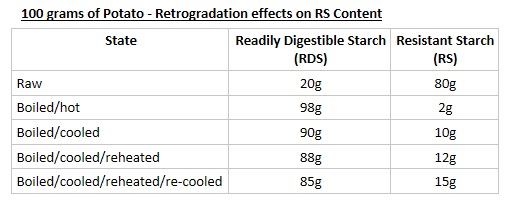

Your mileage may vary
If you have lived your life and never or perhaps rarely taken antibiotics and you typically eat fermented food on a routine basis, chances are RS may not benefit you as much as someone else. If however you have been exposed to repeated rounds of antibiotics and don’t eat much fermented food, chances are RS can offer you great improvements in terms of health. The people it helps most notably are people who are struggling with Intestinal issues such as IBS, Chron’s, diabetes, metabolism issues and people struggling with immune system related issues. It also offers considerable benefit to those struggling with hormonal and neurotransmitter issues as well as things like anxiety, depression and OCD.
It’s ironic that those most compulsively concerned about “germs” are likely people who have suffered from immune system related problems in early childhood causing health ailments where dysbiosis has been at the root, often unbeknownst to them. It has been said the best offense is a great defense. And this couldn’t be anymore true here.
It’s not that all “germs” are bad and should be eradicated, the fact is RS works precisely because it feeds and supports “germs” namely the “good” ones rather than the “bad” ones. The old wives tale of living in too clean of an environment leads to immunity issues such as allergies down the road such as in the hygiene hypothesis therefore is only partially true. It’s not lack of exposure that is the issue rather it is that many people carpet bombed their immune system/bacterial support system to the point where it was so compromised it has never fully recovered.
Serotonin & the Gut-Brain connection
95% of the bodies serotonin is produced in the gut by bacteria. One of the main bacteria implicated in the serotonin production pathway is Bifidobacerium Infantis. If you remember Tim Steele’s most enriched bacteria was the bifidobacterium at an eleven fold increase above normal levels. This means that taking appropriate prebiotics and ensuring that you are also taking the right bacterial strains could lead to dramatic shifts in neurotransmitter and hormone production capability.
There has been a lot of research lately showing how various bacteria can reduce anxiety and depression and alter mood and behavior. One of the root causes of depression and anxiety is a gut imbalance which then leads to a neurotransmitter imbalance.
What else is interesting is the reverse is also true. Negative thoughts, feelings and stress also influence bacteria and can raise levels of “bad” bacteria and lower levels of beneficial bacteria through stress hormonal activation.
It seems resistant starch may have powerful effects on serotonin and therefore melatonin as well. I have personally found that that taking RS 4-5 hours before bedtime to be important. If I take it right before bed I wake up feeling exhausted. I believe the reason is that transit time from mouth to colon is roughly about 4-5 hours and it is ideal to have the RS arriving in your colon as you sleep. It seems to promote more rejuvenating sleep and perhaps assist with critical liver detox that occurs in the early morning hours.
Diversity is key
A brief map showing species variation depending on location as well as average number of organisms. The lactobacilli tend to occupy the upper intestines while the bifido dominate the lower intestine.
Testing
It is possible to get you gut biome tested via a stool sample. In fact if this is you first time reading about resistant starch and you are interested in trying it out, consider getting yourself tested first so you can do a before and after comparison and then post your results online somewhere. It would be of an immense benefit to helping us collectively understand better what is going on in peoples guts. Good tests to do are as follows:
Both the above tests are genetics based in that they are sequencing the DNA of the micrboes in your stool. This is quite different than then standard practice of using a microscope and eyeball-estimating or culturing.
Bifido bacteria are your friends
On of the primary organism that RS appears to increase is bifidobacteria. It is these bacteria that confer many benefits to you their host. Bifido constitute 90% of the gut microflora in infants that are breast fed. Bifido do things like:
- Improve digestion
- Production of Vitamins
- Bioconversion of many compounds such as folate
- Inhibit Candida and E.coli by lowering pH in the gut
- Reduce gas
- Enhance the immune system
In many cases supplemental bifido can also completely eliminate IBS and diarrhea.
But perhaps one of it’s most beneficial aspect is that bifido cross-feed other beneficial bacteria species. Specifically Clostrida being one which then produce SCFAs.
SCFA are an energy source for your intestinal cells. They also help tighten the junctures in the intestinal cell lining preventing conditions such as leaky gut.
While there is still a lot that is unknown about how Resistant Starch works and what it feeds specifically it appears that:
“Leitch et al. [24] found relatives Eubacterium rectale, Ruminococcus bromii and Bifidobacterium adolescentis to be the main colonisers of resistant starch particles, and these same species were detected using stable isotope probing with labelled starch by Kovatcheva-Datchary et al. [25]” (source)
The online community that is currently experimenting with RS is trying different bacteria and combinations of bacteria to see what works best. There is likely to be a lot of individual variance. So far the following stand out.
Other beneficial bacteria
While there are many bacteria that have benefits for one reason or another these ones specifically are singled out for their remarkable properties in conjunction with RS. B.Infantis which is likely the primary bacteria responsible for Serotonin production is not found in 90% of probiotics on the market. This is why doing your research is important before buying probiotics.
- Bifidobacterium infantis – implicated in the serotonin production pathway, has anti-depressant like effects and improves motivation. Also rated the top bacteria in a comparison study with 9 others from VSL#3 in terms of reducing gut permeability.
- Lactobacillus brevis and Bifidobacterium dentium – best GABA producers (reference) B.Brevis is rated 2nd in terms of reducing gut permeability in a 9-species comparison.
- Lactobacillus Plantarum – strong imuno-modulation tendencies; may also cure eczema (reference) Rated 3rd in reducing gut permeability compared to 9 other species. 1st in reducing soy allergy in this study.
- Bifidobacterium bifidus – known to be good at displacing the bad guys
- Lactobacillus rhamnosus – reduces anxiety and OCD; also makes GABA
- “Roseburia intestinalis” and “Eubacterium rectale” – primary producers of SCFAs
- Clostridium cluster XIVa [Roseburia] and F. prausnitzii
- Bifidobacterium adolescentis – cross-feeders of SCFA producers (reference)
- B. subtilis – makes Vitamin K2 and digests gluten, casein & sourdough. Also 2nd in reducing soy allergy. Jenny McCarthy attributes curing her son of autism partly through the use of Threelac which contains this bacteria. Anecdotally other people have cured their allergies and eczema as well.
Recommended Probiotics for purchase:
- Bifido Bifidus by Natren
- Bifido Infantis by Natren or align B.infantis 35624
- Prescript-Assist
- ProBiotic 3 by AOR- contains a specific butyrate producing bacteria
- VSL#3
- CP-11 by Custom Probiotics
- Primal Defense Ultra
- L. Plantarum
by Jarrow Formulas – this strain is rated the best colonizer when compared to about a dozen others
But won’t RS feed the bad guys too?
According to the evidence collected so far it will not. In fact the opposite seems to be the case, in that it feeds primarily the beneficial bacteria and crowds out/inhibits the more dangerous Proteobacteria such as E.coli, Salmonella, Vibrio and Helicobactera. If you look above at Tim Steels n=1 report you will see he has less pathogenic Proteobacteria than anyone else! This has seemingly been one of the most profound discoveries when it comes to RS.
In fact resistant starch has been used as an effective treatment to treat cholera. It has been shown in a lab that 98% of cholera bacteria will detach from an agar substrate and bind to the resistant starch for elimination. (refrence) Dr. B G uses resistant starch as part of her Small Intestinal Bacteria Over-growth (SIBO) protocol to flush out excess microbes from the small intestine.
The increase in beneficial bifido populations which is on of the primary functions of RS helps create a more acidic environment through enhanced SCFA production in the colon which is considered a good thing. This environment inhibits the virulent hyphal from of the fungus Candida reverting it to its non-pathogenic unicellular form. (references) Anecdotally for me personally RS was the key that helped me get over a pervasive candida infection.
Other prebiotics:
- Galacto-oligosaccharides (GOS) – known for it’s bifido specificity; sold as Bimuno
- Short-chain fructooligosaccharides (FOS)
- Inulin
- Mannan-oligosaccharides (MOS)
- Lactulose
- Glucomannan – from konjac root
- Galactomannan aka. Guar Gum from guar beans
- Larch Arabinogalactan
- Beta-glucan
- Various Pectins
- Flavonols – from greens and cocoa (reference)
All prebiotics are in the form of molecules called glycans. There are over 2,000,000,000 glycans the constitute the “human glycome”. Cutting edge research is exploring these glycans and how they relate to various microbiota.
Your body produces mucin (as in mucous a type of glycan) in the gut and this is also there for the purposes to help nourish your microbiome.
So how do all these other prebiotics/glycans compare to resistant starch? Not all glycans are equal. No one really knows and studies are mixed in terms of results. In vitro vs in vivo can make a difference and cross-feeding among bacteria and individual biome uniqueness can create hundreds of confounding variables further complicating the matter. Ultimately a mix of the various prebiotics is probably best to cover most of your basis. However using RS as a foundation is probably wise because anecdotally we know it works for many people.
GOS is another well known prebiotic that has been empirically shown to have good bifidogenic properties. GOS is a substrate similar to those secreted in breast milk that fuels the 90% bifido as a ratio of gut population in infants.
Prebiotics is something that needs to be researched further and experimented with. It could be a serious contender to RS, but for the time being RS is much more accessible found in most local grocery stores. Plus it’s cheap.
Supper Booster recipe - Mix it up:
Diversity is a good thing especially when it comes to prebiotics and probiotics. What I do personally is mix a bunch of things together into a super booster style drink and rotate various probiotics. I drink this once a day on an empty stomach 4-5 hours before bedtime. Mixing the probitoics with RS in water is ideal because it will enhance survivability and should increase transit length through the GI tract as well.
- 3/4 glass of water
- Prebiotic 1 of:
- 4 tbsp of Bob’s Red Mill Potato Starch Unmodified
- 4tbsp of Plantain Flour
- 1 sachet of Bimuno
- 4 tbsp of Bob’s Red Mill Potato Starch Unmodified
- Probiotic 1 of:
- 2 grams of CP-11
- 2 grams of Natren Bifido Factor & 2 grams of Life Start 2
- 1 sachet of CocoaVia
for flavonols
Then I drink that and swallow the following:
- 4 capsules of Greens
- 1 tablet FOS and 1 capsule of Apple Pectin
- 1 capsule of Prescript-Assist or 1 capsule of AOR ProBiotic 3
Benefits of Resistant Starch: (long list)
— decreased glycemic response (in both healthy subjects and diabetics)
— increased insulin sensitivity
— improved fasting blood sugar (10 or 15 point drops in many individuals, sometimes even greater)
— increased satiety
— improved metabolism
— improved fat burning
— improvement of adipose tissue patterning (body fat)
— improved sleep (deep and “movie-like” vivid dreams)
— improved digestion
— improved regularity
— improved blood/lipid profiles
— improved chelation/elimination of heavy metals
— improved colon pH (acidic is better)
— improved uptake/absorption of vitamins and minerals
— improved neurotransmitters (like serotonin)
— improved butyrate and Short-Chain Fatty Acid production (by feeding butyrate producing bacteria)
— improved colon health (by the production of Short-Chain Fatty Acids)
— improved previous damage to colonocytes
— improved mucosal integrity (gut barrier)
— protection against (experimental) colorectal cancer
— increased nitrogen disposal and reduced blood urea concentrations
— improved eye health
— improved body temperature
— reduced stress and improved well being (anecdotal)
— potential treatment for ulcerative colitis
— does not affect one’s ability to maintain ketosis (if that’s desired)
— increased insulin sensitivity
— improved fasting blood sugar (10 or 15 point drops in many individuals, sometimes even greater)
— increased satiety
— improved metabolism
— improved fat burning
— improvement of adipose tissue patterning (body fat)
— improved sleep (deep and “movie-like” vivid dreams)
— improved digestion
— improved regularity
— improved blood/lipid profiles
— improved chelation/elimination of heavy metals
— improved colon pH (acidic is better)
— improved uptake/absorption of vitamins and minerals
— improved neurotransmitters (like serotonin)
— improved butyrate and Short-Chain Fatty Acid production (by feeding butyrate producing bacteria)
— improved colon health (by the production of Short-Chain Fatty Acids)
— improved previous damage to colonocytes
— improved mucosal integrity (gut barrier)
— protection against (experimental) colorectal cancer
— increased nitrogen disposal and reduced blood urea concentrations
— improved eye health
— improved body temperature
— reduced stress and improved well being (anecdotal)
— potential treatment for ulcerative colitis
— does not affect one’s ability to maintain ketosis (if that’s desired)
Additional Resources:
- Free the Animal Blog – ground zero of the recent RS movement
- Animal Pharm Blog – a scientific look at RS and SIBO
- Cooling Inflammation – a deeper scientific look
- Human Food Project - contribute to the mapping of the microbiome
- Mr.Heisenbug Blog – interesting blog on microbiota, constantly asking questions
- The Resistant Starch Challenge: Is It The Key We’ve Been Looking For? – CFS/ME forum thread where I actively contribute
- The Wired Atlas of the Human Ecosystem – Infographic
- The Definitive Guide to Resistant Starch by Mark Sisson
- A good overview on “Fiber” – Not all Fiber is equal. Cellulose as in salads is the least fermentable of many kinds of fiber
- Invisible Life – Short Essays on various microbes
Podcasts:
- Latest in Paleo 97: Perfect Resistance – a good summary of the latest in RS with Tim Steele and Richard
Videos:
Research:
- Probiotics Prevent Gluten Sensitivity and Intestinal Damage from Gliadin also Antibiotics linked to Celiac
- Colicky Babies May Have Wrong Bacteria
- Mind-altering microorganisms: the impact of the gut microbiota on brain and behaviour
- Resistant Starch: Now We’re Getting Somewhere Part 1 & Part 2 (35 links to research)
14 comments
4 pings
Annika
Excellent and comprehensive write-up! I’ve been flowing the goings-on at Free the Animal with great interest. Unfortunately I have not reacted well to even small amounts of potato starch or tapioca starch; I am having issues with dyspepsia and heartburn, which occurred with each of my 5 1-week trials of RS, and has persisted somewhat even after stopping all RS. I think I must have a low-level SIBO which was kicked up a notch by the RS. I’m taking a break from all RS and taking probiotics, then I will give supplemental RS another try.
One thing: in your chart titled “High Resistant Starch Foods”, you list potato flour. Potato flour is cooked and contains very little RS; I think you meant to put potato starch in that chart, yes? Bob’s Red Mill sells both potato flour and potato starch, and I wouldn’t want people taking the wrong one.Annika
Wow – there’s a ton on info in that thread, most of it way over my head. How complicated it all is! Thanks for pointing me that way.richard barca
Hi Gestalt..I have been trawling the web for a while and stumbled across your site because of the chitin layer killer products out there…It seems everyone wants the dollars for there products which I feel will not be effective at all..”too many on the band wagon”! your RS protocol is the most down to earth I have found and will impliment this asap..as my wife is suffering badly with a blistering skin condition called Pompholyx which I feel is linked to over taking yeast/fungal infiltration. It has really affected her life..plus mine with similar symptoms. Your site said raw potato can be consumed which gave an 80g level of resistant starch..can you please expand on this for me?
Regards RichardJason
Great article!
After starting prebioti/probiotic and RS therapy I have entered a terrible brain fog that hasn’t let up in over a week. I have stopped all things (RS, kefir, aor3, prescription, inulin and probiotic defense) but the fog has not lifted. My energy has been sapped. What would be the cause and solution to this?sdfbsdfbs
pretty sure that’s die off reaction
Jillian
I am a bit confused that in the article it states that resistant starch is used in a protocol for SIBO as I have heard the complete opposite. I have read that it actually is a main thing you want to avoid as it feeds the bacteria in the small intestine and leads to further fermentation and increased gas. I have been an acid reflux sufferer for many years and have also heard that SBIO and it’s resulting gas can be a big contributer (of course among other things!) Is it possible to clarify this for me? Thanks.Mary Anne
Could you elaborate further on the benefit to a person with candida, a fungus? I am trying to wrap my head around the idea that a starch with normally feeds candida is good for the gut.Mikayla
I have the same question as Mary Anne. Just had to take 3 different antibiotics and I am trying to figure the best mix of supplements to replenish my gut.
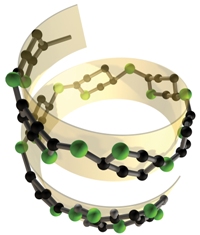
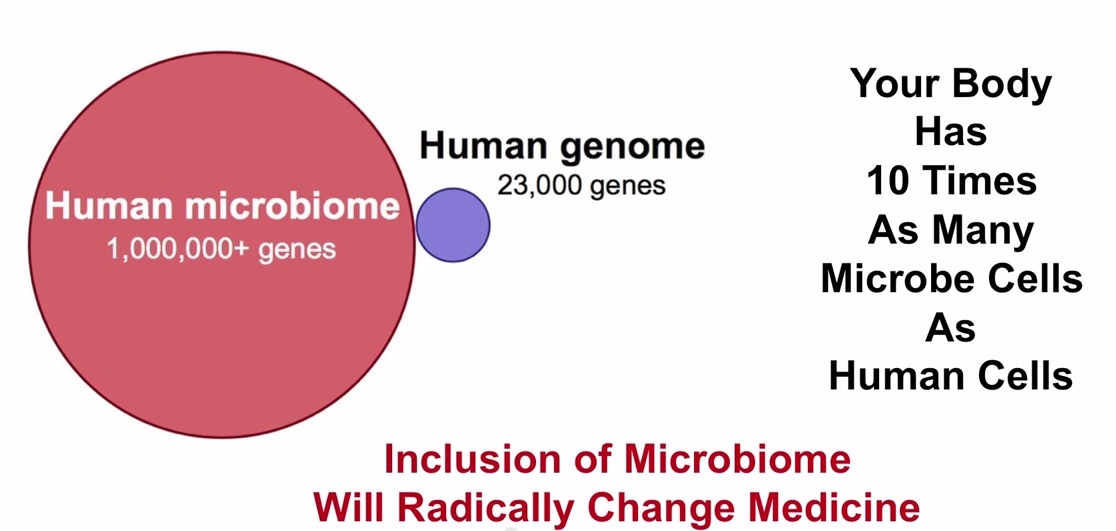
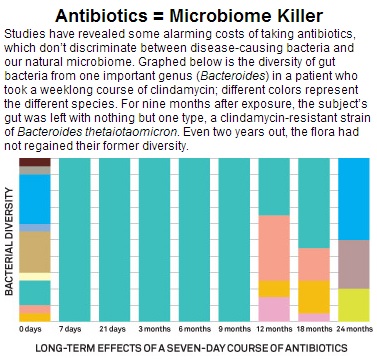
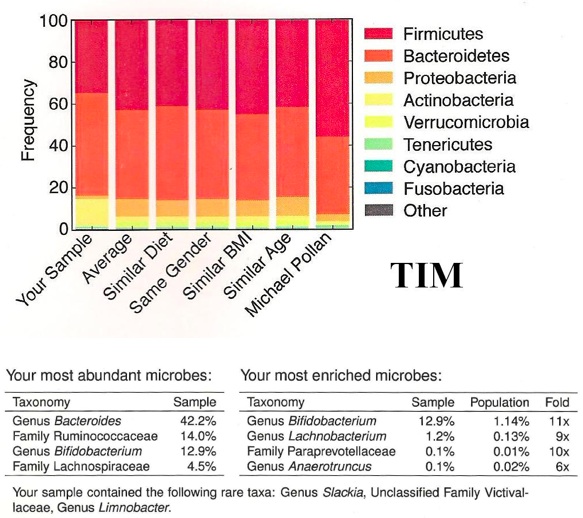
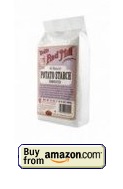
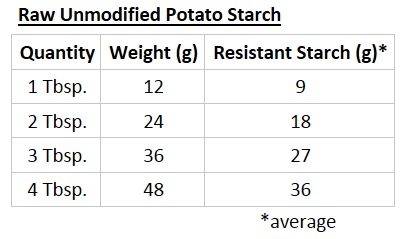
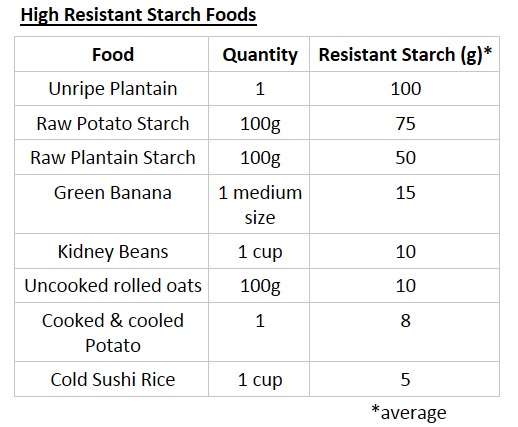
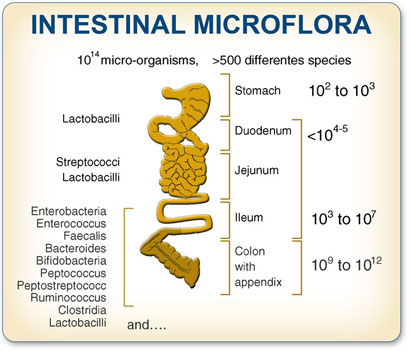
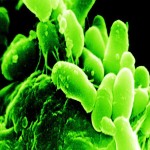


Great summary, handy to have it here. One thing that makes me scratch my head - here he lists various probiotics for supplementation and then in other places we read that it's useless to supplement with probiotics since they do not survive the trip through the digestive tract...what to believe? I've been eating fermented foods, but have yet to purchase probiotics since I don't know where the truth lies.
ReplyDelete